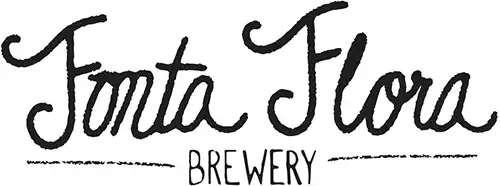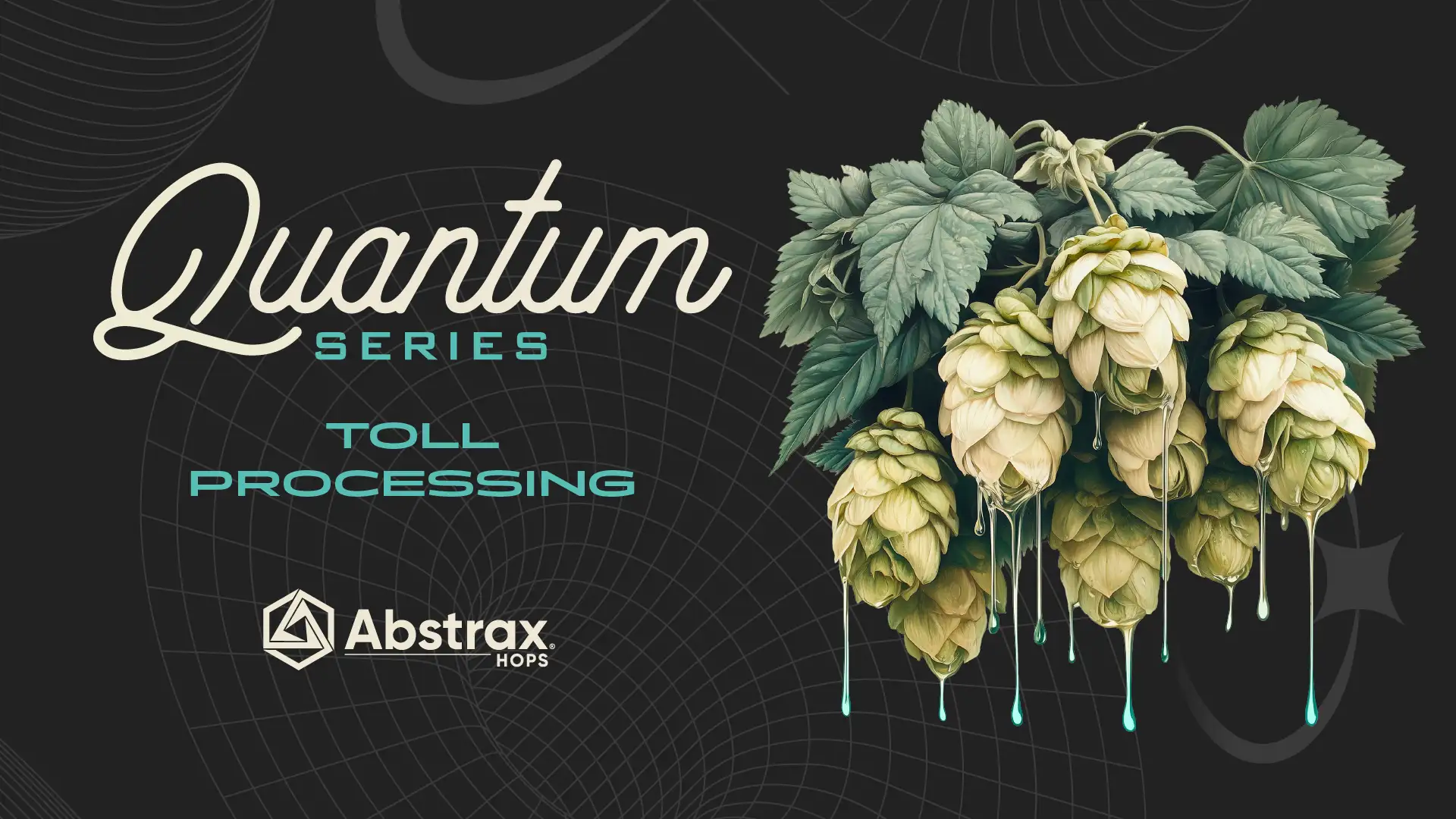
When it comes to brewing high-quality craft beer, staying attuned to innovation is essential, not only to keep your brewery up to speed with recent trends but also to continually improve and elevate your brand. Abstrax Hops has been on the cutting edge of a plethora of craft beer breakthroughs, some of which we’ve covered here in this space, including their BrewGas Series. Abstrax Hops’ latest flowable advanced hop innovation, the Quantum Series, now allows breweries to take matters into their own hands, offering a toll processing service that turns hand-selected pellets into a flowable product.
We chatted with Abstrax Hops National Sales Manager Barbara Stone, as well as early adopters of Quantum at Von Ebert Brewing and New Trail Brewing, to learn about the toll processing service, where to use Quantum in the brew process, and the benefits of using the product to improve your finished beer.
Affordable, Industry-Leading Brewery Software
Abstrax Explains Quantum Toll Processing
The Quantum Series is a hop-derived, varietal-specific flowable product that provides a burst of aromatics. Abstrax released Quantum about a year ago, with ten varietals that have expanded to sixteen offerings. You’ll find some of the most-popular Southern Hemisphere varieties, like Nelson Sauvin and Nectaron. More recently, Abstrax introduced a new service to cater to a growing cost-conscious producer.
“We knew the industry was facing two challenges,” explains Stone, noting an oversupply of hops causing a financial burden to brewers, coinciding with a focus on hop selection. “When looking to allow a liquid solution, you don’t look to add another obstacle. We needed to consider both [hop selection and financial burden].”
Abstrax created a proprietary toll processing service that takes the hops brewers hand-select at harvest and turns them into Quantum.
“Toll processing allows them to use their own inventory that they are long on or have selected,” Stone says. “And that’s a financial win for them.”
While she couldn’t share the proprietary science behind the toll processing, Stone could tell us that the Abstrax process does not start with CO2 extract.
“We pull the majority of the volatile flavor and aroma compounds while CO2 does not,” Stone says. “Once we have a clean oil product, we put it through our emulsification technology, where it becomes water soluble. We have a very tight quality spec on our emulsions, and the bonus is that it is also Whole Foods Compliant with a fantastic shelf life.”
Start to finish, Abstrax asks for a maximum of sixty days to process the hops and charges only based on the ounces of oil extracted. Once processed, Stone says Quantum—which Abstrax packs in 4oz, 8oz, 32oz, 1-gallon, and 5-gallon bottles—stays shelf-stable for up to a year or longer in some cases.
Stone says Abstrax requires a minimum of 132 pounds of a particular hop—or three 44-pound boxes—to start toll processing.
“The yield on those is determined by a few things,” Stone says. “We’re seeing anywhere from five to ten times the dosing equivalency yield as the outcome.”
While the return can be upwards of ten times the dosing equivalency yield, Stone notes that a half-ounce of Quantum equals one pound of T-90 pellets.
How Does Quantum Differ From Similar Products?
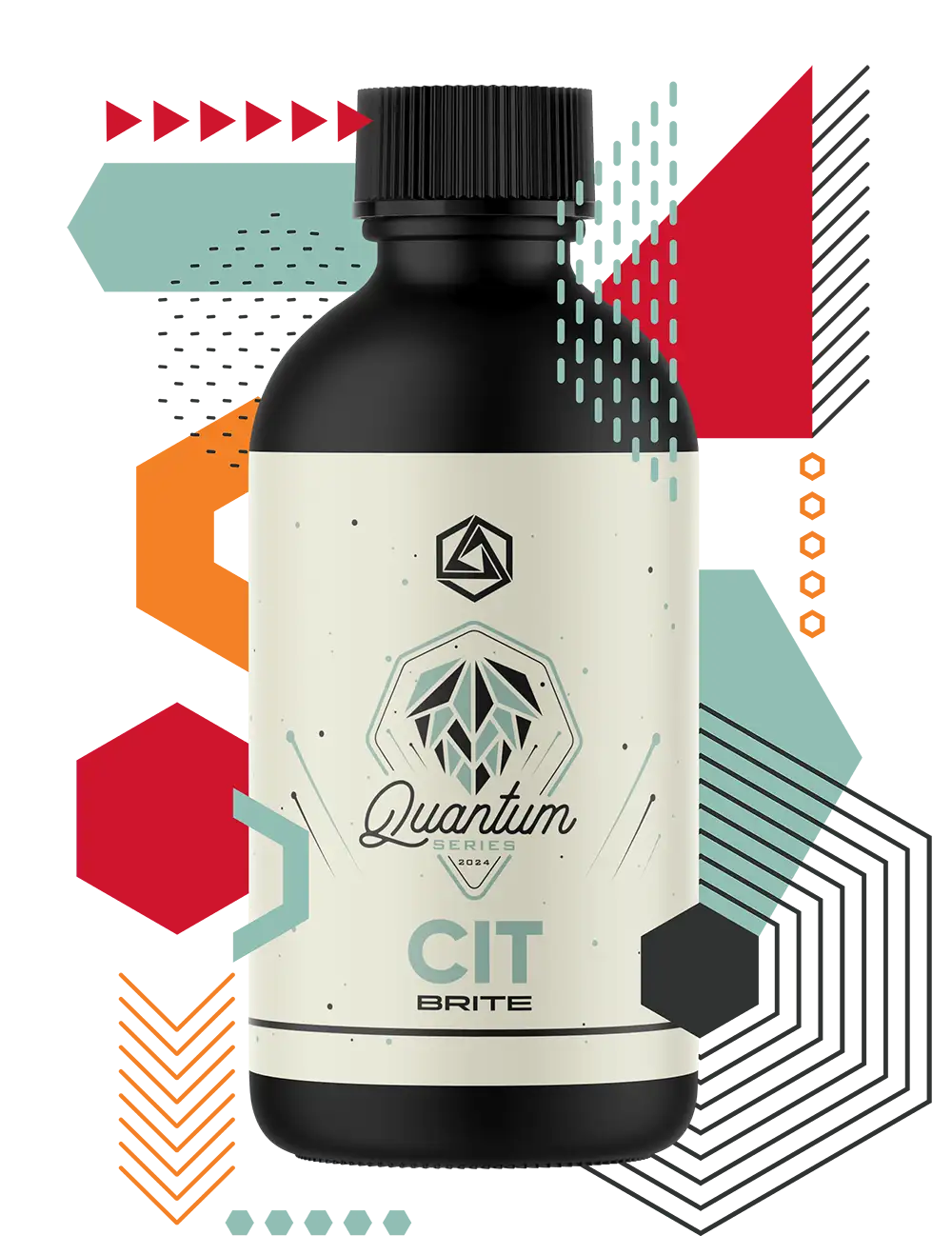
Abstrax has the technology to prove that they are processing hop oils from specific lots.
Other companies don’t.
“We have proven with sensory and GC data that the oils provided in the initial pellets are what make it into the final Quantum product,” Stone says. “Our technology is patented, and we are the leaders in providing this solution for brewers.”
New Trail Brewing Owner and Director of Brewing Operations Mike LaRosa said he learned about Quantum about a year and a half ago, connecting with Abstrax at the 2024 Craft Brewers Conference.
After testing samples at the brewery, LaRosa visited the Abstrax booth at the conference and spoke with Abstrax Director of Brewing and Beverage Innovation Tom Nielsen. “He just walked me through the whole process,” says LaRosa. “It was a match made in heaven.”
After smelling and tasting samples for a month, LaRosa sent out the minimum allotment needed for Citra, Mosaic, and Ekuanot hops, all used in their flagship IPA, Broken Heels.
“I am a big believer in selection, so I like the idea of taking those [hops] and putting them into something that’s flowable,” LaRosa says. “We immediately started tinkering with our flagship. And we saw the best cost-production analysis. We understood it the most, what it’s supposed to taste like, when it starts to fade.”
LaRosa says he tried other flowable products in the past, but it was hard for him to come off his commitment to T-90s.
“Up until Abstrax seven years ago, I was one hundred percent a T-90 guy,” he says. “What I was really impressed with was that the smell was all there. The aroma was all there. I am still a firm believer of T-90, I am just happy to supply it with a little flowable from Abstrax.”
LaRosa adds, “The thing I really like is sending my selected lots for tolling. No one else provides that.”
Von Ebert Director of Sensory and Innovation Jason Hansen started a conversation with Stone about toll processing in May 2024.
“We initially did some small trials with their standard non-tolled Quantum and were pleased with the product and process,” Hansen says, noting they sent some of their 2023 hops for Abstrax to process into Quantum in the summer of 2024.
Hansen says that Von Ebert has found the tolled Quantum to be a good representation of the hops they select.
“We are still dialing in replacement and substitution rates for established brands, but when creating new brands, we can expect the same attributes we get from T-90 or concentrated pellets,” Hansen says.
Von Ebert initially sent in Citra T-90, Mosaic T-90, Mosaic Cryo, and Riwaka Cryo for tolling.
“After some trials, we have replaced a portion of our Citra dry-hop in our core hazy IPA, Sector 7, with Quantum Brite,” Hansen says. “We find it provides a really fresh, pellet-y character in that beer that we enjoy.”
Hansen notes that Von Ebert also selected and contracted a small amount of Riwaka Cryo on a whim, without any idea of where it would be used. After processing some of it to Quantum, they have since used it in some recent one-off collaboration IPAs with Fort George and Russian River.
Von Ebert has also found success with the tolled Mosaic Quantum.
“Mosaic is the heavy lifter in our brewery, specifically for our flagship American IPA, Volatile Substance,” Hansen adds. “We are still trialing to see if it works in that beer, but have used the Mosaics in some one-offs, including our heavily terpenated Poetic Alchemy IPA that is a finalist in the Abstrax Skunkworks competition.”
Where in the Brew Process Do You Use Quantum?
Stone says that the perfect place to add Quantum is on the cold side, right before carbonation. However, each brewery has its own method.
“A lot of production-size breweries like to throw it in when they open the tank to dry-hop,” says Stone, noting it all depends on a brewery’s capabilities, systems, and quality programming. “Quantum likes residency times. It likes five to seven days in the tank.”
But as a ratio, Stone notes that Quantum is not a one-hundred percent replacement for T-90 pellets.
“We’re comfortable saying it is a thirty percent replacement rate where you will see a true-to-brand sensory result for flagship beers,” Stone says. “We see some brewers that use up to a fifty percent replacement rate and prefer that sensory profile, so the product is quite versatile. Just as a T90 hop pellet would provide a flavor and aroma outcome dependent on where and when you add it to the beer in process, the same is true for Quantum.”
LaRosa says New Trail uses its Quantum in the brite tank or inline to the brite. He says they make about five hundred barrels of Broken Heels each week, dosing Quantum two or three times throughout the hundreds of barrels brewed weekly.
“We use nitrogen when we dose,” he notes. “It’s for the stability of the emulsification process.”
LaRosa says when they got their hands on the Quantum, it took them a good three months to learn splits of the flowable product against the T-90 pellets.
“We are reducing dry weight by twenty-five percent,” he says. “So we get seventy-five percent T-90 and twenty-five percent Abstrax.”
Hansen says they experimented with Abstrax’s flowable hop product at most stages of the brewing process, including the whirlpool, with dry-hopping in the fermenter, and inline during transfer from the fermenter to the brite tank.
“We generally prefer to use it inline during transfer, as we feel this is the most impactful and least wasteful,” he says. “We already had equipment and an SOP to add liquid inline to a transfer, so the learning curve was minimal.”
Hansen adds, “With our hot-side trials, we had to adapt our hopping schedule to maintain target BUs, and that combined with the reduced polyphenol led to beers that didn’t have the texture we want or were not true-to-target for established brands.”
As for ratios, Hansen notes that it truly depends on the beer, but advises sticking around that half ounce per pound of T-90 recommendation by Abstrax.
“We’re comfortable replacing about twenty-five to thirty percent of a dry-hop charge with advanced products, including concentrated pellets,” Hansen says. “Any more than that, and the reduced polyphenol affects overall texture too much.”
Hansen says that they pay a lot of attention to what hop polyphenols bring to the table in terms of astringency, non-IBU bitterness, and overall mouthfeel. He adds that many of Von Ebert’s hop-forward beers are designed with a post-dry-hop re-fermentation built in, which he believes contributes to a specific positive flavor and mouthfeel.
“If we remove too much T-90, that re-ferment can be affected and we end up with under-attenuated beer,” he says. “At least for our brewery, dry-hopping with T-90 is still essential.”
The Top Three Benefits of the Quantum Series
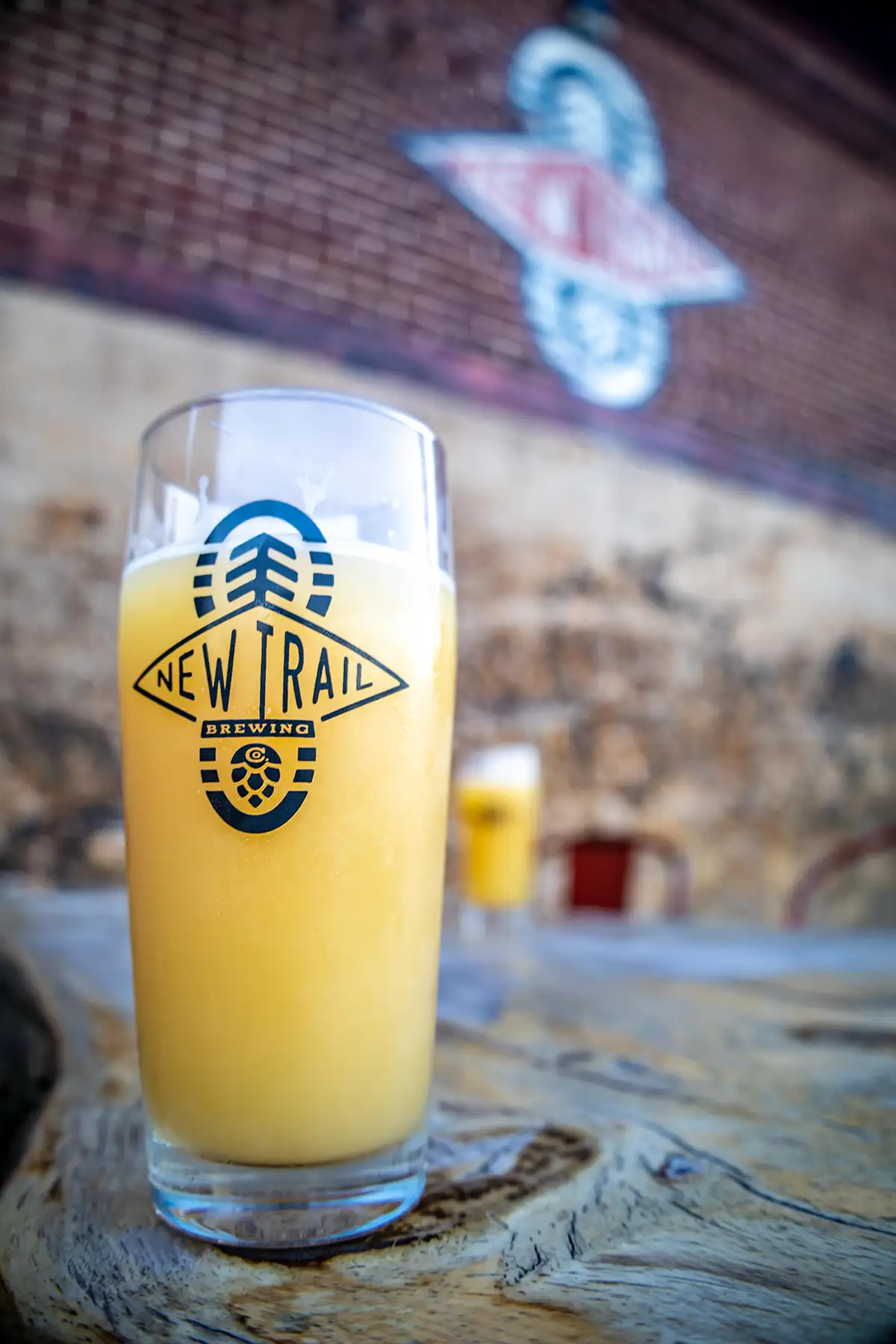
Hansen says the top benefit for him of Quantum and toll processing is getting the exact flavor profile Von Ebert wants from the hops they’ve selected.
“For example, our target for Mosaic tends to be different than a lot of breweries. We look for Mosaic that has high berry, high pine/resin, medium mango, low to medium Juicy Fruit gum, and low citrus,” Hansen says. “Most advanced hops products that we’ve tried from other suppliers tend to have other OG attributes and higher citrus that we are not looking for in that variety.”
Second, Hansen raves about the increased yield.
“The tolling quantity is oil-based, so higher oils will yield more product,” Hansen says. “For example, we tolled 88 pounds of Riwaka Cryo and received 576 ounces of Quantum in return. That’s the equivalent of 1,152 pounds of pellets, or a 13-fold increase of effective product to use.”
Hansen’s third benefit is working with the Abstrax team, which he refers to as the dream team. LaRosa agrees, citing Abstrax’s experience and industry knowledge.
He also points to increased shelf stability and yield increases.
“We reduce our dry matter in the fermenter by twenty to thirty percent, depending on the dry hop pounds,” says LaRosa. “Abstrax pushes the envelope. No one has done something like this. … Everything they said about yield, cost savings, aroma, it’s all true.”
Data Shows Quantum Makes Gains in Finished Beer
While Stone notes custom toll processing immediately helps breweries save on the cost of goods, “Yield savings is a win as well,” she says, “with customers reporting in excess of three percent in yield gains, and some reporting between three percent and eight percent gains out of tank when using Quantum.”
Stone adds, “There are storage and transport wins too. Quantum does not require refrigeration prior to being opened.”
In referencing Broken Heels, LaRosa says that when they first started using Quantum, they saw an immediate difference in the younger versions within a month.
“The aromatics were more citrusy than regular. And over time, the Abstrax held a higher aroma longer through blind sampling,” LaRosa says. “As far as yield, we saw a yield increase downstream through the brite tank, but it’s a solid two to four percent increase in yield.”
LaRosa says that even though you’re shelling out more money upfront to send hops to Abstrax, go through the tolling process, and get them shipped back, the downstream savings are higher.
“[For us], the toll liquid compared to the dry pounds, it’s a five to eight-times increase, assuming a half fluid ounce for one pound of dry T-90.”
Hansen further adds to his anecdote on Riwaka Cryo tolling as proof of data.
“Since we would replace the Cryo pellets with one ounce per pound, that’s more than a three-fold cost efficiency,” Hansen says. “Additionally, of course, there are yield savings on less beer loss to dry-hop absorption. Though we don’t have hard numbers on that, I’d estimate a rough average of three to five percent more beer in the brite tank when we use these products.”
What Size Brewery Can Use Quantum?
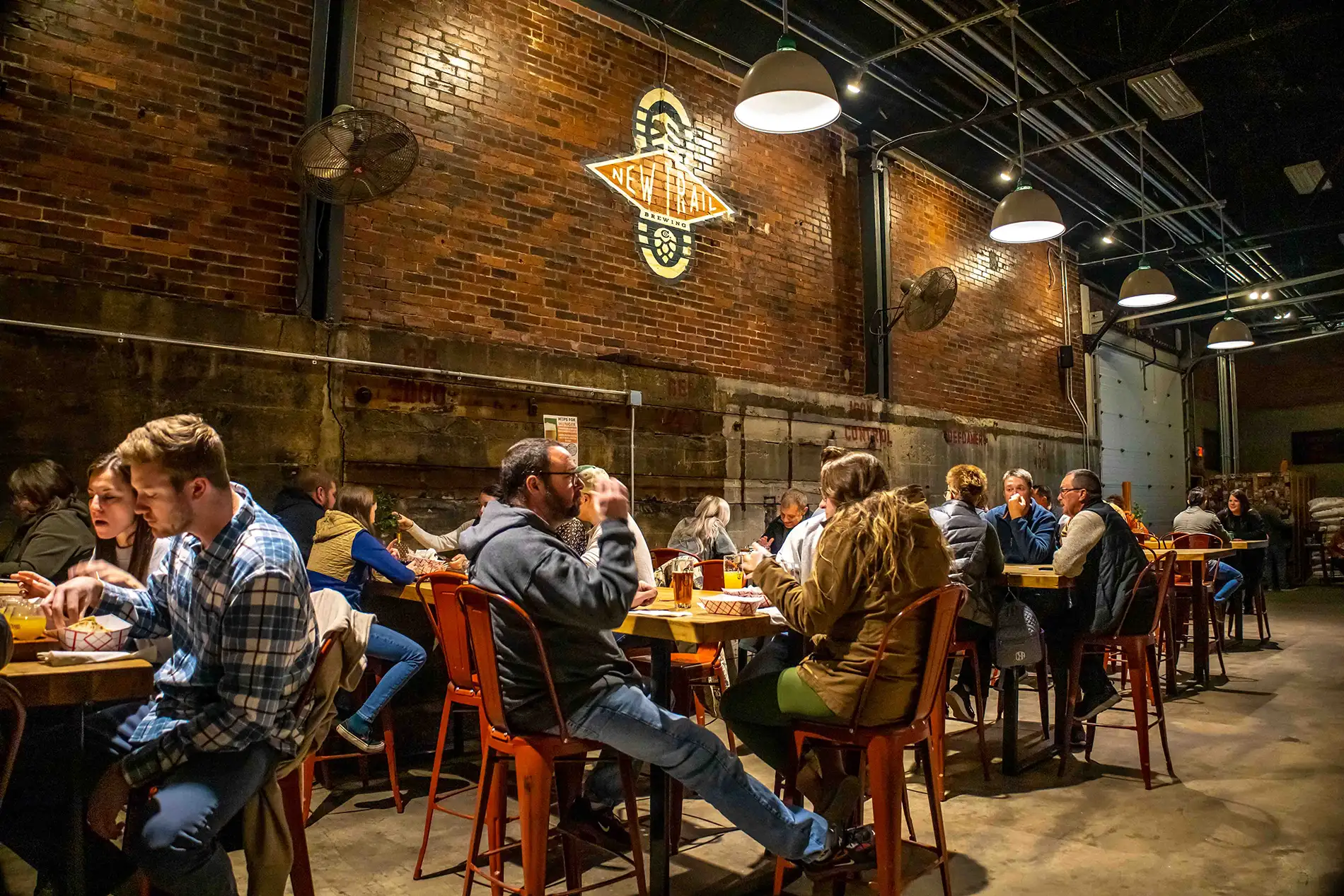
Any size brewery can take on toll processing, Stone notes.
“We are in national IPA brands making tens of thousands of barrels of brands,” Stone says. “And we are in breweries with a two-barrel brewhouse.”
However, if you’re unsure, Abstrax offers its pre-made Quantum, crafted from its selected hop varieties, which is ready for purchase at any time. Once you have completed the trials, Stone suggests reaching out to Abstrax about toll processing.
“You don’t have to produce a lot of beer to go through this,” says Stone, noting you’ll get the best outcome by using your most in-demand, higher-quality hops. “Custom tolling processing is an immediate win.”



